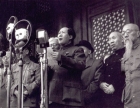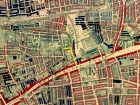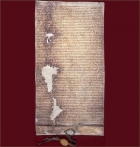Overview & Depth
Assessment criteria for public examinations (at A-level and GCSE) require students to study history at different scales of resolution. Sometimes they are required to adopt a wide vantage point that allows them to survey a long sweep of time, making it possible to see the prevailing trends and turning points. On other occasions they are required to zoom in close, focusing on a much shorter time-span, with scope to examine the lives of individuals and particular groups of people. The materials in this section deal with the distinctive characteristics of schemes of work operating at these different levels and also prompt teachers to consider how overview and depth studies can best be combined and sequenced at Key Stage 3 – helping students to develop more coherent frameworks on which to build their own ‘big pictures’ of the past. Read more
-

Time for chronology? Ideas for developing chronological understanding
ArticleClick to view -

Transforming Year 11's conceptual understanding of change
ArticleClick to view -

Understanding 'change and continuity' through colours and timelines
ArticleClick to view -

Using an anthology of substantial sources at GCSE
ArticleClick to view -

Using individuals’ stories to help GCSE students to explain change and causation
ArticleClick to view -

What time does the tune start? From thinking about 'sense of period' to modelling history at Key Stage 3
ArticleClick to view -

Year 9 - Connecting past, present and future
ArticleClick to view -

‘Compressing and rendering’: using biography to teach big stories
ArticleClick to view

